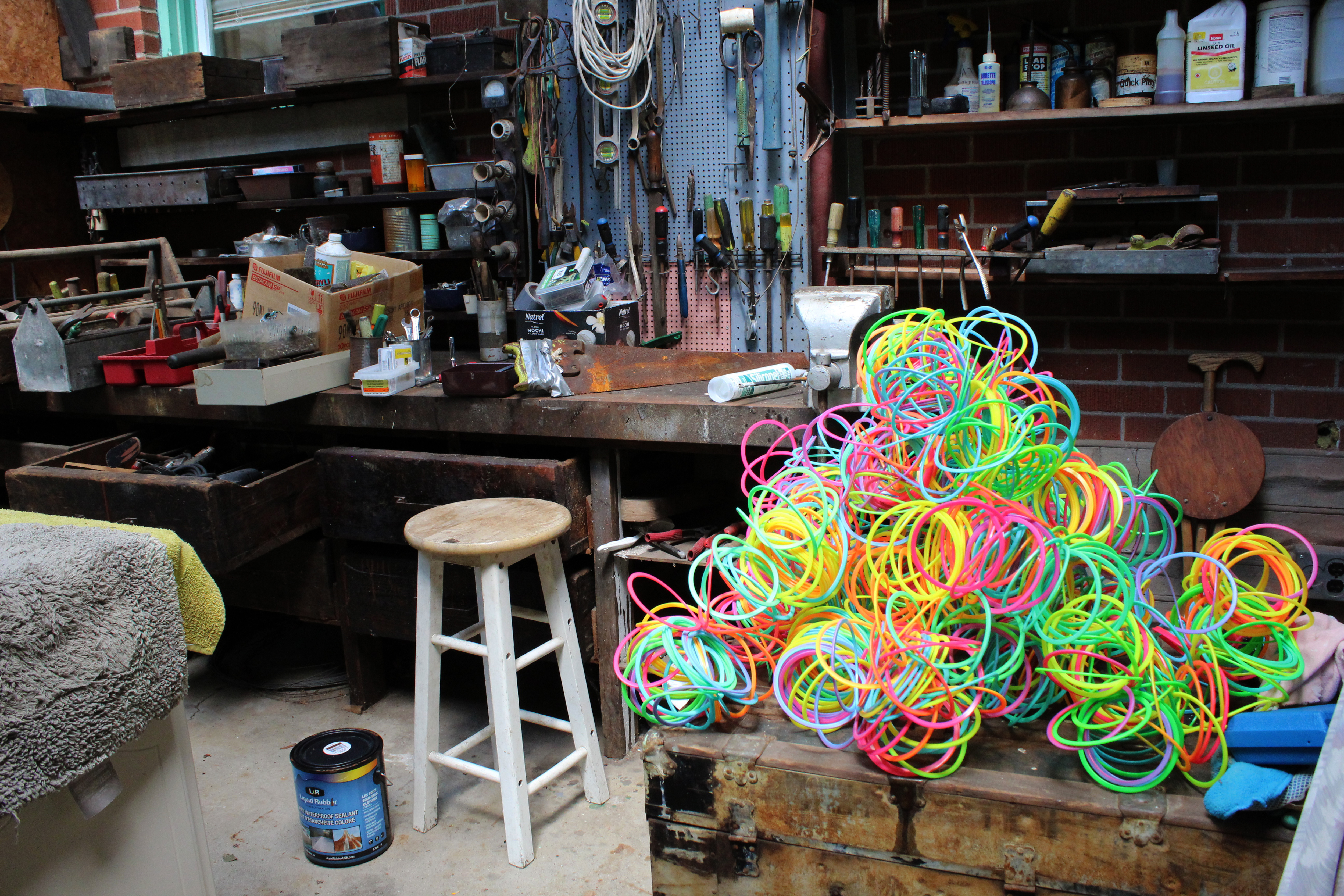Growing up, we had a family joke about the fairly common experience of opening a cupboard and finding mom’s overflow stash of things like Kleenex, beans or toothpaste that no longer fit in the kitchen or bathroom. We’d darkly refer to it as her Holocaust syndrome, implying that her need to stockpile, to be prepared, was inherited from her mother, a hidden child survivor. The following body of work is situated at the intersection of coming across 10 cans of crushed tomatoes in the bathroom while looking for toilet paper and the impulse to hold close and care deeply for items and people that have been historically taken away.
Using found objects and creating work that uses or depicts an accumulation of materials, I reflect on a particularly Jewish collecting impulse that inspires a culturally specific method of storytelling. Each work is informed by the organized chaos of collections, the aesthetics of tangential narratives, restlessness and layering in order to express my own relationship with various facets of cultural Judaism.
See the full Museum of Jewish Montreal exhibition here
Funding for this exhibition was generously provided by the Ontario Arts Council
Photography by Karice Mitchell
🌚️🌝️🌚️🌝️🌚️🌝️🌚️🌝️🌚️🌝️
Breaths Monuments Offerings
Curated by Haley Ritter
with Shelley Zhang, Natalie Hunter and Lauren Prousky




















Click here to read an essay on contemporary cultural Judaism and charm bracelets.
Points of Contact (mandibles, tarsal claws, and adhesive pads and hair). performance for video.5:46. 2020


Follow up performance in 2021.